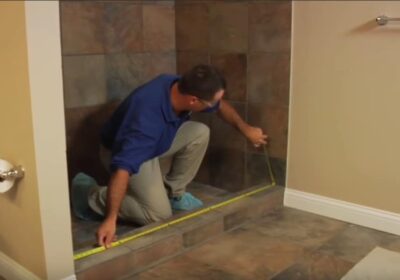▷6 Steps to Choosing and Installing Your New Kitchen Countertops In San Diego

6 Steps to Choosing and Installing Your New Kitchen Countertops In San Diego
Did you know that upgrading your kitchen countertops can increase your home’s value by up to 80% of the renovation cost? If you’re looking to enhance your kitchen without breaking the bank, installing new countertops is a game-changer. From choosing the right material to DIY installation hacks, we’ve got you covered with five expert tips for a seamless countertop upgrade. Say goodbye to outdated surfaces and hello to a fresh, modern kitchen that reflects your style and boosts your home’s appeal.
Planning Your Countertop Project
Measure Existing Countertop
Start by measuring your current countertop accurately to determine the amount of new material needed. Consider hiring a professional for precise measurements if unsure.
To ensure accuracy, measure the length and width of the existing countertop in inches, then multiply these two numbers to get the total square footage.
Choose Countertop Material
Research different countertop materials such as granite, quartz, marble, or laminate. Each material has unique characteristics like durability, maintenance requirements, and cost.
Consider factors like resistance to heat, stains, and scratches when selecting the material to suit your lifestyle and budget.
Budget for Upgrade
Create a detailed budget outlining costs for materials, labor, removal of old countertops, and any additional expenses. Factor in unexpected costs for a realistic budget.
Compare prices from various suppliers and contractors to ensure you are getting the best deal within your set budget.
Schedule Installation
Coordinate with suppliers and contractors to set a timeline for the installation process. Ensure that all materials are delivered on time to avoid delays.
Plan ahead for any disruptions to your daily routine during the installation period. Stay flexible with the schedule in case of unforeseen circumstances.
Preparing the Workspace
Clear the Area
Start by clearing the kitchen area around the countertops to make room for the installation process. Remove any appliances, utensils, or decorations to ensure a clutter-free workspace.
To facilitate the countertop installation, empty all cabinets and drawers beneath the countertops. This will prevent any items from getting in the way during the installation process.
Protect Surrounding Surfaces
Prior to beginning the installation, cover surrounding surfaces with protective materials such as drop cloths or cardboard. This will prevent damage to floors, cabinets, and appliances during the countertop installation.
Use masking tape to secure the protective coverings in place and ensure they do not shift or move during the installation process. Taking this step will help maintain the integrity of your kitchen surfaces.
Gather Necessary Tools
Before starting the countertop installation, gather all necessary tools and materials. These may include a tape measure, level, drill, screws, adhesive, and safety equipment like gloves and goggles.
Having all tools on hand before beginning the installation will streamline the process and prevent delays. Ensure that all tools are in good working condition before starting the project.
Cutting the New Countertop
Mark the Cut Lines
Begin by measuring and marking the cut lines on the new countertop to ensure precision and accuracy. Utilize a straight edge and pencil to mark where the cuts will be made.
Use Proper Saw
Select a circular saw with a diamond blade designed for cutting countertops. Ensure the blade is sharp and appropriate for the material of your new countertop to achieve clean cuts.
Smooth the Edges
After cutting the countertop, smooth the edges using sandpaper or a router to eliminate any roughness. This step ensures a polished finish and reduces the risk of injuries from sharp edges.
When smoothing the edges, pay attention to detail and take your time to achieve a professional-looking result. Remember, safety goggles and gloves are essential when working with power tools.
Installing the Countertop
Apply Adhesive
To start, apply a generous amount of construction adhesive along the top edges of the cabinets. This will help in securing the countertop firmly in place. Make sure to use a high-quality adhesive for better durability.
Next, gently lower the countertop onto the cabinet base, ensuring it aligns perfectly with the edges. Press down firmly to allow the adhesive to bond effectively. Take your time to make any necessary adjustments before proceeding.
Align and Secure
Once the countertop is in place, use a level to check for alignment. Adjust as needed to ensure a perfectly straight and even surface. Secure the countertop by attaching screws from underneath the cabinets into the underside of the countertop.
Ensure that the countertop is securely fastened to prevent any movement or shifting over time. This step is crucial for maintaining the structural integrity of the countertop and ensuring its longevity.
Attach Backsplash
To finish off the installation, apply a bead of silicone adhesive along the back edge of the countertop. Carefully place the backsplash onto the adhesive, pressing down gently to secure it in place. Wipe off any excess adhesive for a clean finish.
Attach screws through the back of the backsplash into the wall for added stability. This will prevent any gaps between the backsplash and the wall, providing a seamless and professional look to your new kitchen countertops.
Finishing Touches
Seal the Surface
After installing the new kitchen countertops, sealing the surface is crucial to protect it from stains and damage. Use a high-quality sealant recommended for the specific material of your countertop. Apply the sealant evenly using a clean cloth or brush, ensuring complete coverage.
To effectively seal the surface, clean the countertop thoroughly before applying the sealant. Remove any dust, debris, or residues from the installation process. Allow the countertop to dry completely before proceeding with the sealing process.
Install Edging
Installing edging around the perimeter of the countertop not only enhances its aesthetics but also provides protection against chipping and damage. Choose edging materials that complement your countertop material and style. Secure the edging in place using adhesive or screws, following manufacturer instructions for best results.
For a seamless finish, ensure that the edging is aligned properly with the countertop edges. Smooth out any rough edges or corners to create a cohesive look that enhances the overall appearance of your kitchen.
Clean Up Workspace
Once the installation and finishing touches are complete, clean up the workspace to remove any tools, debris, or leftover materials. Wipe down the countertops and surrounding areas to remove any dust or dirt accumulated during the installation process. Dispose of waste properly and organize your tools for future use.
FAQs
How Important Is Planning Before Starting A Countertop Project?
Planning is crucial as it helps you determine the materials needed, budget, and timeline. It ensures a smooth process and prevents costly mistakes during installation.
What Workspace Preparations Are Necessary For Installing New Kitchen Countertops?
Clear the area of any items on the existing countertops, ensure proper ventilation, have necessary tools ready, and protect surrounding surfaces from damage during the installation process.
Is Cutting The New Countertop A Task That Can Be Done Without Professional Help?
Cutting the new countertop requires precision and specific tools. If you have experience with similar tasks and feel confident in your abilities, it can be done DIY. Otherwise, it’s recommended to hire a professional to avoid mistakes.
How Challenging Is The Actual Installation Of The Kitchen Countertop?
Installation can be moderately challenging depending on your experience level. Following the manufacturer’s instructions carefully, using proper tools, and having a helper can make the process smoother and more manageable.
What Are Some Finishing Touches That Can Enhance The Look Of Newly Installed Countertops?
Applying a sealant to protect the surface, adding decorative edge profiles, ensuring all seams are properly sealed, and cleaning up any excess adhesive or debris are essential finishing touches to enhance the appearance and longevity of your new countertops.
Conclusion
Completing your kitchen countertop installation project requires attention to detail and precision. By following the steps outlined in this guide, you are well on your way to achieving a professional-looking result that adds both functionality and aesthetic appeal to your kitchen. Remember, proper planning, workspace preparation, precise cutting, meticulous installation, and those finishing touches are all crucial to the success of your project.
Now that you have the knowledge and guidance needed, it’s time to roll up your sleeves and get started on transforming your kitchen with new countertops. Take your time, follow each step carefully, and don’t hesitate to seek help if needed. With determination and these tips in mind, you’ll soon be enjoying a beautiful and functional new addition to your home.
To benefit from our superior services, contact Pro Services General Contractors at (888) 564-3777 right away.
Contact Pro Services General Contractors today for our amazing remodeling services.
BELOW ARE SOME OF THE MANY HOME INTERIOR SERVICES THAT WE OFFER
-
Kitchen BacksplashKitchen Backsplash
-
Kitchen CabinetsKitchen Cabinets
-
Kitchen CountertopsKitchen Countertops
-
Kitchen FaucetsKitchen Faucets
-
Kitchen LightingKitchen Lighting
-
Kitchen SinksKitchen Sinks
-
Kitchen TileKitchen Tile
-
Bathroom AdditionBathroom Addition
-
Bathroom CabinetsBathroom Cabinets
-
Bathroom FaucetsBathroom Faucets
-
Bathroom SinksBathroom Sinks
-
Bathroom TileBathroom Tile
-
Bathroom VanitiesBathroom Vanities
-
Shower DoorsShower Doors
-
Shower SystemsShower Systems
-
Basement RemodelingBasement Remodeling
-
Crown Moulding / BaseboardsCrown Moulding / Baseboards
-
Dining Room RemodelingDining Room Remodeling
-
Home Office RemodelingHome Office Remodeling
-
Living Room RemodelingLiving Room Remodeling
-
ADUADU
-
Disability / Mobility ADUDisability / Mobility ADU
-
Finished BasementFinished Basement
-
First StoryFirst Story
-
Garage ConversionGarage Conversion
-
Granny FlatGranny Flat
-
Second StorySecond Story
-
Engineered StoneEngineered Stone
-
Engineered WoodEngineered Wood
-
Green FlooringGreen Flooring
-
Hardwood FlooringHardwood Flooring
-
Laminate FlooringLaminate Flooring
-
Natural Stone FlooringNatural Stone Flooring
-
Tile FlooringTile Flooring
-
Kitchen TileKitchen Tile
-
Bathroom TileBathroom Tile
-
Pool TilePool Tile
-
Exterior TileExterior Tile
Related Posts

▷DIY Backsplash Installation: A Step-by-Step Guide In San Diego
DIY Backsplash Installation: A Step-by-Step Guide In San Diego Installing a new kitchen backsplash can seem…

▷5 Tips To Install New Bathroom Faucets In San Diego
5 Tips To Install New Bathroom Faucets In San DiegoLooking to upgrade your bathroom? Installing…

▷Expert Advice for Installing a Stunning Tile Backsplash In San Diego
Expert Advice for Installing a Stunning Tile Backsplash In San Diego Looking to revamp your…

▷5 Benefits of Remodeling Your Living Room In San Diego
5 Benefits of Remodeling Your Living Room In San Diego Did you know that on average,…

▷5 Practical Tips for Combining Kitchen and Dining Rooms in Your Remodel In San Diego
5 Practical Tips for Combining Kitchen and Dining Rooms in Your Remodel In San Diego Embarking…

▷Tips to Measure and Install Shower Doors: A Step-by-Step DIY Guide In San Diego
Tips to Measure and Install Shower Doors: A Step-by-Step DIY Guide In San Diego Did you…

▷Ways to Remove and Install Bathroom Vanity Cabinets In San Diego
5 Reasons to Increase Your Home Value with Basement Remodeling In San Diego Did you…

▷5 Reasons to Increase Your Home Value with Basement Remodeling In San Diego
5 Reasons to Increase Your Home Value with Basement Remodeling In San Diego Did you know…
